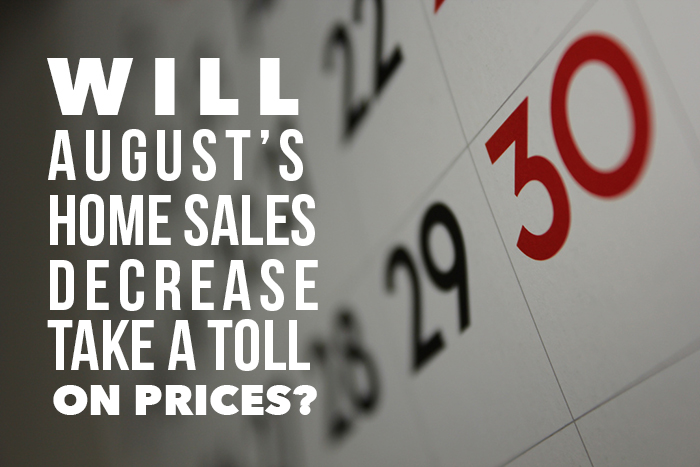Author: Igor Nastaskin
September 2015 Homes Sales & Price Report
As fall has arrived, California home sales have slowed, but this is usual for the off-season. In September, sales across the state were still above 400,000, and the median home price was approximately $480,000. With improving sales, all eye are on the effects of the new Consumer Financial Protection Bureau’s “Know Before You Owe Disclosure.” Due to the extended loan processing time, it appears certain sales have been delayed. During the first week of implementation, lower numbers of mortgage applications were completed. No one truly knows the long-term effects of this new disclosure. Although California’s median home price has steadily increased, it may have experienced its peak for 2015. Economists explain a shift in the mix of sales has helped moderate house prices. This trend is expected to continue through the rest of the year. There are other key points mentioned in September’s resale housing report. As sales improved, the amount of active listings dropped. Also, unsold inventory was down from one year ago, and the time it takes to sell a home decreased by approximately four days. According to the sales-to-list ratio, real estate is selling below list price. The only area enjoying high demand and a push for prices above listing is San Francisco Bay. This is partly due to a lack of homes on the market. At the state level, price per square foot has seen an increase, but it has started to level off. In September 2015, mortgage rates fell as well. The average fixed-mortgage rate was 3.89 percent.
Home Purchase Applications set for Healthy 2016
With the housing market now almost fully recovered, more people than ever are applying for new mortgages. Mortgage origination numbers have increased by 10 percent in the last year. In 2014, purchase originations stood at $759 billion, but climbed to more than $821 billion this year. Financial insiders expect the number of mortgage originations to rise even higher and total more than $900 billion by the end of 2015. However, this good news is tempered somewhat by the news that mortgage refinancing has stalled. While more people are buying homes, fewer people are seeking to refinance their houses. The Mortgage Bankers Association predicts that mortgage refinancing will drop from $630 billion this year to around $415 billion next year. This number is a one-third decline in refinancing mortgages. The MBA expects these refinancing numbers to continue to fall in 2016 and 2017. It predicts the number of mortgage refinances to stand at $1.32 billion in 2016 and be less than $1 billion in 2017. Even so, new mortgage originations are predicted to increase during those years. The MBA expects these mortgages to total around $987 billion, even as this gain will be offset by the predicted $331 decline in refinancing at the same time. The MBA notes that mortgage originations increase directly correlates with the improving economy. As more people reenter the workforce, they have more money to spend on housing, as well as consumer goods like cars and appliances. Economic growth is predicted to increase by 2.3 percent in 2016.
What do Pending Homes Sales Really Forecast?
When looking at all the indicators in the real estate market, realtors make some typical conclusions. Traditionally, they look at the pending home sales in any one month and believe that the actual purchases would be fairly close a few months later. However, realtors may need to observe some other important factors when forecasting actual home sales. When an offer to purchase a home is accepted by the seller and a contract is signed, the transaction is considered a pending sale. Once a month, The National Association of Realtors® publishes a report with this information. Unfortunately, not all pending sales result in an actual sale. Whether the buyer fails to secure a mortgage, the seller cancels the deal or the home inspection reveals some major issues, pending home sales are never a sure bet. The good news is that the pending sales report still provides important data to make positive predictions. But wait, there’s more! Hidden in the pending sales report figures is the purchase price information. By looking at the Housing Price Index (HPI), real estate agents can notice how price changes are affecting the residential market. By closely comparing the pending home sales with the actual home sales and the mean sales price, there are some interesting conclusions to make. Taking the usual lag time between the pending and actual home sales into consideration, realtors can also forecast the movement of projected home prices. Armed with this information, realtors can help their clients realistically set their purchase price or evaluate whether a certain home is good buy.
East and West U.S. Divided on Home Prices
Because of a split between states east of the Mississippi River and those west of the river, indicators for the U.S. home market seem to be all over the board. From June to July, cities in the East, including Chicago and Miami, experienced price drops, but cities in the West, such as Portland and Las Vegas, witnessed price increases. Analysts seeking an explanation for the uneven market have found answers to their questions in the divide that has occurred in recent months. Although the number of new-home sales hit its highest mark since 2008 this past August, indicators predicting the strength of the market have not been readily apparent. Economists claim that the divide in the housing market varies widely in different cities because it is so strongly linked to the job market. In the West, where the technology sector is strongest, home prices have rapidly increased, but cities in the East that have strong industrial sectors saw price drops. “These conflicting trends may be confusing and even frustrating for some, but right now they shouldn’t be too much cause for concern,” said Svenga Gudell, chief economist for Zillow. “The market is continuing to heal and find its footing in a new environment, one where highly local factors, including jobs, matter more in local markets than national trends.” According to the S&P/Case-Shiller index, San Diego, Dallas, Portland, Phoenix and Las Vegas experienced the highest growth from June to July while Chicago, Detroit, Minneapolis, New York and Miami saw sharp declines.
Out-of-Control Rents Make Home Ownership Even More Attractive
A great many Americans have chosen to rent their primary residence rather than purchasing a home. Renting has traditionally been a choice that allowed you to obtain a residence while remaining free from costly taxes and home repairs, but recent studies have shown that renting may not be a suitable option any longer. A Grim Outlook for Renters The large spike in foreclosures a few years ago turned many long-time homeowners into renters, and that developed a market where would-be renters were vying for a limited number of rental properties. This served to drive the price of rents higher, and the trend continues. With wages staying much the same, it has become increasingly difficult for renters to make their monthly rental payment. A recent research report from the the Harvard Joint Center for Housing Studies and Enterprise Community Partners shows that more than half of America’s renters already spend a whopping 30 to 50 percent of their yearly salary on rent. With the rental population predicted to rise to more than 4 million in the next decade, a great many of those renters may expect to pay even more than 50 percent of their yearly income just on rent. Time to Consider Home Ownership These out-of-control rental costs are an excellent indication that the time has come for you to consider purchasing your own home. Contact our office today, and one of our professional real estate associates will help you navigate the path to becoming a homeowner.
Will August’s Home Sales Decrease Take a Toll on Prices?
According to the National Association of Realtors, the Pending Home Sales Index revealed the month of August saw a small dip in its numbers. Despite the fall, the results were stronger than this point last year. Although the numbers have grown consistently for one year, the Index dropped 1.4 percent from July to August. On a high note, the Index reported a 6.1 percent improvement from August 2014. Cities in California and Colorado enjoyed an increase, but all other areas suffered slight declines. The Northeast was down 5.6 percent in August but gained 8.9 percent from a year ago. The Midwest slightly dropped 0.4 percent in August but enjoyed an increase of 6.5 percent from 2014. The South was down 2.2 percent in August but up 4.1 percent from the previous year. As the West posted gains, the market continued to follow the trend of strong demand and quick-moving supply. Even though these numbers were a bit surprising to many economists, sellers should not be worried. Demand is outpacing supply, which elicits price growth in many markets. It is possible for the 2015 national median existing home price to rise over $220,000. This would be a 5.8 percent increase from last year. The decrease in pending home sales can be written off to the time of year and the effect of the dropping number of investors and foreign buyers. Lawrence Yun, chief economist for NAR, predicts the market will pick up a bit without reaching any pre-bubble heights. He believes existing home sales will increase by 5.28 million, approximately 2 million less than the peak of 2005.
Modest Real Estate Gains are Still Good News
It has been a hot summer for real estate in California with home sales higher than they were a year ago. Although sales in August decreased by 3.8 percent from July, the numbers were still up by 9.3 percent over the previous period in 2014. This means that home sales were above 400,000 for the fifth month in a row. While more properties are being sold, prices are showing signs of cooling off. In fact, home price gains were modest, reflecting the smallest increase in more than three years. This may seem disappointing for sellers, but it is a positive sign for the market on a whole. After all, the slowed growth actually represents stabilization. With more homes on the market, competition tips more toward the buyer. This means that there is increased activity throughout California, which is good for buyers and sellers at all price points. To look at the numbers, median home prices only went up by one percent in August, showing a minimal increase over home prices in July. This gain was 2.5 percent over the previous year. While these tepid gains may seem like a letdown after an exciting buying season this summer, California is still expected to have a solid finish in 2015. Overall, sales figures should be higher in 2015 than expected. There are many factors at play in the market, including increased inventory and renewed interest from new buyers, but 2015 is still a great time to buy or sell in California.
Home Equity in the United States is Up
A recent study completed by Black Knight Financial Services confirms that available home equity in the United States has jumped by an estimated $1 trillion during the last year. This is the highest it’s been since 2007, which is happy news for homeowners. Looking at the Specifics The assessment found that the majority of this year’s growth occurred from January through May. During these five months, the nation’s available equity expanded by a whopping $825 billion. This calculation came to about 2.5 times more than it was at the end of 2011. According to the numbers, the nation’s average homeowner with a mortgage has access to about $19,000 more equity than he or she did last year. Available Equity In completing the study, financial researchers determined that 37 million potential borrowers have access to equity in their existing homes. When the research team dug deeper into the numbers, they found that 39 percent of the nation’s available equity was in California alone. This is six times as much as the state with the next highest numbers, which is Florida. Despite the concentration of equity in California, many homeowners are seeing the value of their homes rise. Considering Credit Scores After the mortgage crisis, fewer people had access to home equity credit lines, but today, this type of borrowing is making a comeback. However, lenders are looking for borrowers with exceptional credit quality. As a result, the risk presented by home equity credit lines has ebbed. This new report could signal a change in the housing market, so keep it in mind if you’re on the fence about a home purchase.








